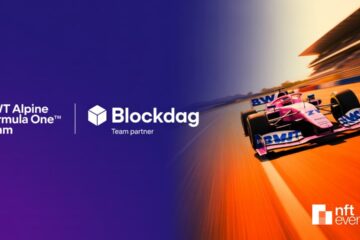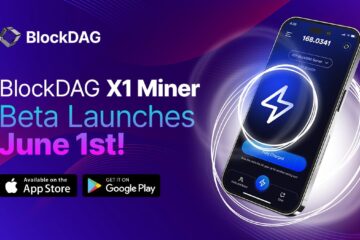As NFT adoption expands across digital markets, the blending of collectible culture, gamified incentives, and blockchain-based utility continues to deepen. This fusion is especially noticeable in platforms that rank among the highest rated casinos, where mechanics like digital ownership, scarcity-driven value, and interactive rewards closely reflect those found in many NFT ecosystems. Understanding how these systems intersect can offer NFT enthusiasts new perspectives on utility, interactivity, and value in decentralized environments.
From Collectibles to Utility: NFTs in the Gamified Economy
NFTs have transcended their origins as mere digital collectibles. Today’s landscape of NFTs revolves around stakeable assets, dynamic smart contracts, and real-time utility in metaverse platforms and play-to-earn ecosystems. Projects such as Sorare and Axie Infinity have set a new standard with their NFTs that allow for aesthetic ownership as well as earning, trading, and participating in a wider economic system.
Additionally, this active engagement model mirrors strategies of many high-performing digital platforms. To retain users, these platforms entice repeat participation by creating incrementally rewarding systems, tiered perks, and gamified value roll-up schemes. The passive and value-driven interactions that both industries emphasize were the innovative system that allowed for fresh methods to participate in the engagement.
Tokenomics and Incentives for Participation
NFT platforms have a wide range of features, and the most sophisticated digital casinos all have one thing in common: the loyalty program and engagement-centered recreation promote off-activity association toward predefined NFT or tokenomic value targets they need to achieve or milestones they unlock through participation. Earned, spent, or redeemable tokens propel engagement forward.
Loyalty points are allocated for every interaction; users are automatically placed in levels that can be infinitely progressed. Even more sophisticated systems allow for custom point scoring that can be set by the users themselves. Achievements are literally unlimited. The challenge comes from crafting fair engagement models that earn users’ earned social capital through posted interactions and incentivize user engagement at sustainable levels while maintaining verifiably transparent token economics.
RNG Meets Ownership: A Shared Dependency on Chance
Minting events commonly use random number generators to create exciting surprises through NFT drops and listing events. Generative art and gaming equipment creation are great examples. Projects such as Capsule House and Art Blocks thrive on this mechanic, introducing unprecedented freedom into partnered user experiences.
The same aspect of likelihood determines the defining characteristics of interactive digital entertainment ecosystems. Interactive digital platforms often implement RNG to ensure fairness and uniqueness; some are even audited under regulatory scrutiny. The connected industry applies RNG in similar ways, depicting how both industries are attempting to blend randomness with value, wherein the outcome is both pleasantly unexpected and extremely desirable.
Community-Driven Innovation and Governance
NFT platforms operate on the basis of community building. Users can participate in DAOs, vote on roadmap decisions, or create assets—all these activities contribute to shaping NFT ecosystems. It is striking to point out that leading NFT projects have focused on transparency and usefulness of value over time, which explains why they sustain community engagement.
There are examples that illustrate this participatory model: those centered around user innovation. Take, for instance, the most popular casinos and countless other platforms that use a sharpened focus on engagement. Responsibly driven engagement tools make users devoted to the brand, along with transparent communication. Such platforms often foster stronger communities and experience growth over time as opposed to those that view users as passive pieces of hardware. Success, in both spaces, relies on the amount of funding and outreach incentive provided to communities.
Digital Identity and Ownership Beyond Gaming
With the rise of non-fungible tokens (NFTs), digital assets are becoming a means of personal expression. From NFT profile picture collections like the Bored Ape Yacht Club to avatar skins in metaverse games, NFTs offer status and functionality to their owners. These assets can be used across various platforms and are not limited to gaming, branding, or social networking; they serve multiple purposes.
This cross-platform use comes hand-in-hand with other engagement trends, such as loyalty programs that reward user interaction in the highest-rated casinos. In every form, users are more than just players or holders: They actively participate in ecosystems where their contributions and assets matter continually.
Conclusion: Toward a Converging Digital Economy
The NFT space continuously incorporates parts from established digital sectors, creating an ever-expanding digital environment. The broader application of fundamental principles like RNG, tokenomics, gamified advancement, and participatory governance underscores the emerging innovation nexus between NFTs and other decentralized ecosystems. Studying how the highest-rated casinos engage users with transparent, fair, and value-driven policies can help the NFT domain define sustainable growth strategies.
The advancement of NFT platforms with a focus on user experience, engagement, and openness will mark industry leaders. The future does not rest in the separation of industries but rather in recognizing the cross-sections of blockchain technologies and their proven ecosystems and determining how to synergistically grow.
 Bitcoin
Bitcoin  Ethereum
Ethereum  Tether
Tether  XRP
XRP  USDC
USDC  Solana
Solana  TRON
TRON  Lido Staked Ether
Lido Staked Ether  Dogecoin
Dogecoin  Figure Heloc
Figure Heloc  Cardano
Cardano  WhiteBIT Coin
WhiteBIT Coin  Bitcoin Cash
Bitcoin Cash  Wrapped stETH
Wrapped stETH  Wrapped Bitcoin
Wrapped Bitcoin  USDS
USDS  Wrapped eETH
Wrapped eETH  Binance Bridged USDT (BNB Smart Chain)
Binance Bridged USDT (BNB Smart Chain)  Chainlink
Chainlink  Monero
Monero  LEO Token
LEO Token  WETH
WETH  Zcash
Zcash  Stellar
Stellar  Coinbase Wrapped BTC
Coinbase Wrapped BTC  Hyperliquid
Hyperliquid  Ethena USDe
Ethena USDe  Litecoin
Litecoin  Sui
Sui  Avalanche
Avalanche  Hedera
Hedera  sUSDS
sUSDS  Shiba Inu
Shiba Inu  USDT0
USDT0  Dai
Dai  PayPal USD
PayPal USD  Mantle
Mantle  Uniswap
Uniswap  Canton
Canton  Cronos
Cronos  World Liberty Financial
World Liberty Financial  Toncoin
Toncoin  Ethena Staked USDe
Ethena Staked USDe  Polkadot
Polkadot  USD1
USD1  Aave
Aave  Rain
Rain  Bitget Token
Bitget Token 


